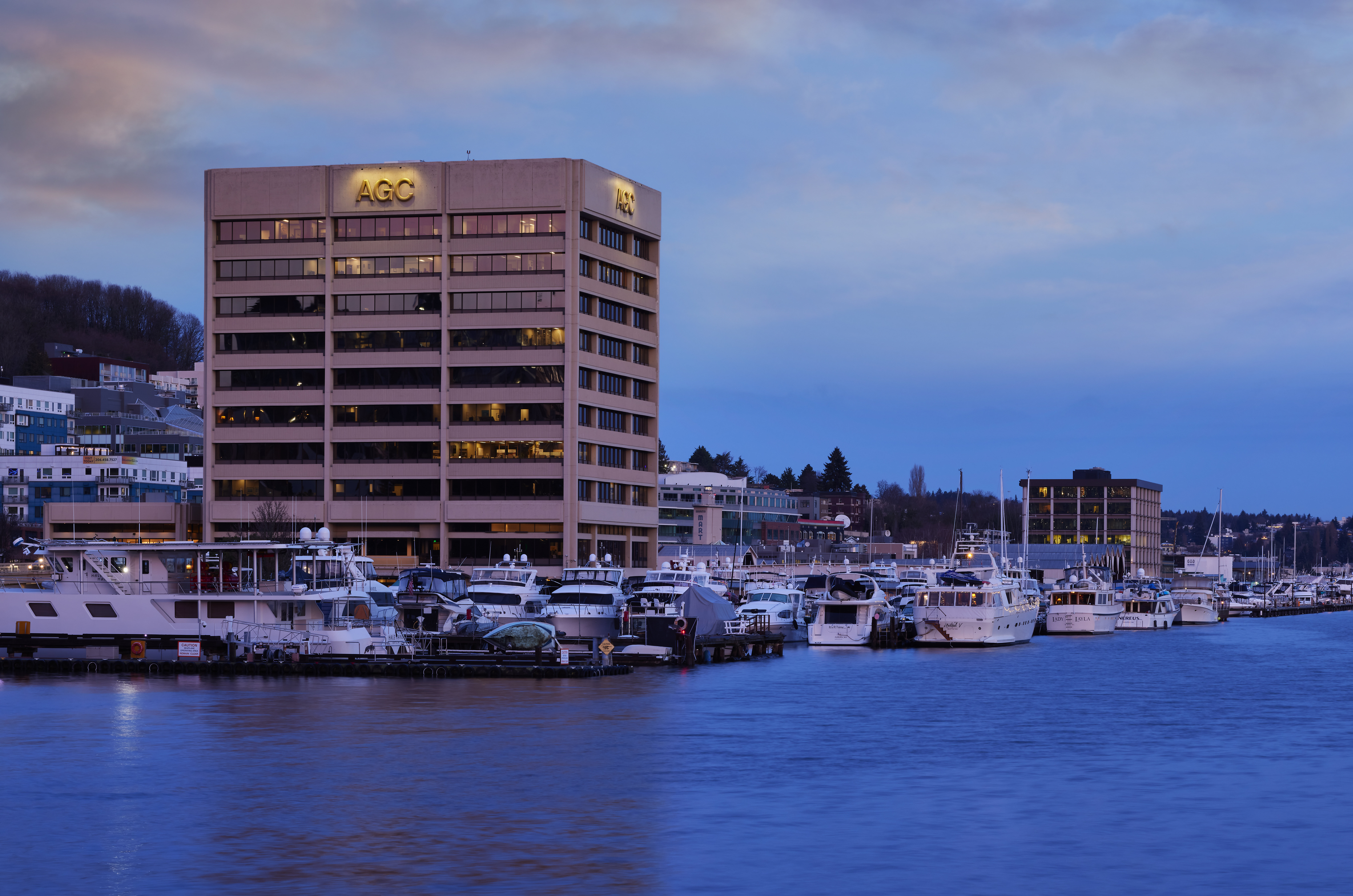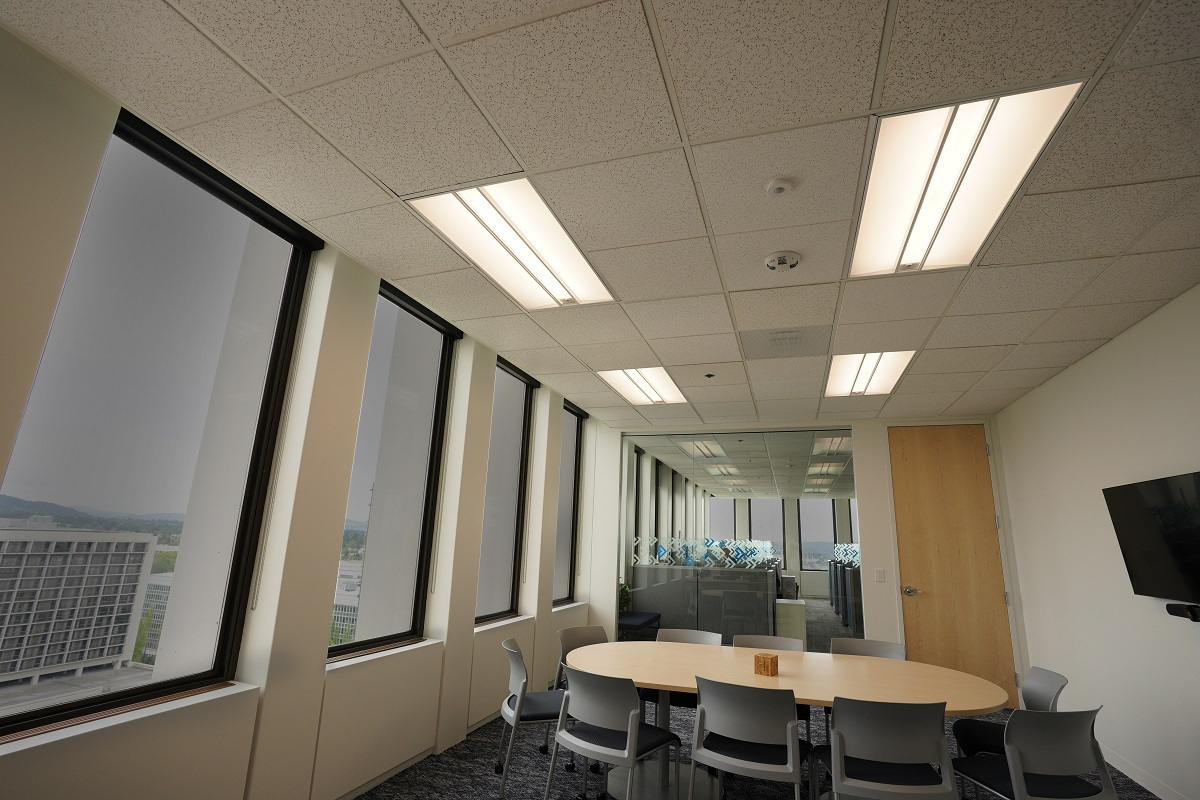3 Myths Stopping You from Saving with Luminaire Level Lighting Controls

If you work in building engineering and management, chances are you know more than a little about lighting controls. Luminaire Level Lighting Controls (LLLCs) are one of the most exciting trends to emerge in recent years because they combine energy savings with long-term flexibility and advanced capabilities beyond just lighting up a space.
But, as a relatively new entrant into the decades-old lighting and building control industries, LLLCs have attracted a few misconceptions. These harmful ideas can stop building managers from realizing the benefits of LLLCs, like reduced energy use, future proofing and more pleasing spaces for tenants.
We asked our senior lighting product manager Chris Wolgamott and the director of the integrated design lab at Washington University Chris Meek to share three common myths about LLLCs.
MYTH 1: LUMINAIRE LEVEL LIGHTING CONTROLS ARE TOO BIG OF AN INVESTMENT
This is a common misconception because it seems true if you only compare the cost of a standard fixture to an LLLC fixture. When you take into account other costs, the story is quite a bit different.
First, installing LLLCs tends to cost less than other fixtures, particularly when compared to a wire and control system that requires an electrician to wire each light back to the system. LLLCs use a wireless control mechanism that side steps that cost. Installation can also take place over a longer period of time. Building owners and managers don’t need to commit to retrofitting a whole building (or even a whole floor) at the same time. Instead, they can pilot an LLLC program in a defined area in order to confirm that it’s the right fit, then roll it out as resources are available.
Second, LLLCs offer the flexibility that makes reconfiguring spaces later on much simpler. When a floor plan changes or spaces that were once open are closed off, LLLCs easily adapt to new conditions, saving money on rewiring and installing new lighting fixtures.
Lastly, a lighting retrofit is a cost-effective way to meet local or state energy performance requirements. If you’re obligated to make improvements to your building’s energy use, starting with LLLCs can be considerably less expensive than other options. Plus, many utilities in the Pacific Northwest are ready to help you offset the initial costs of an LLLC system through different financial incentives. Find out what incentives are available in your region by heading to our utility program page.
MYTH 2: LIGHTING CONTROLS SAVE A LOT OF ENERGY, BUT IRRITATE OCCUPANTS
Office workers have for many years been the victims of well-intentioned yet poorly executed attempts to reduce energy use. Motion-sensing lights became a pain because sensors were poorly placed or too far away from occupants to sense motion and stay on when needed. Or, these systems weren’t equipped with dimming functions, leading to lights that simply switched on and off without warning.
Both of those circumstances are almost impossible with LLLCs.
Because each fixture incorporates a sensor, building occupants are surrounded by sensors that can accurately tell when the building is in use. (No more powering down because a sensor is too far away). With sensors in every corner of the building, the output of each light also better matches the conditions around that fixture. Plus, LLLCs are designed with smooth dimming so that lights gradually power up or down.
MYTH 3: SENSORS PREVENT ME FROM HAVING THE FIXTURES THAT I WANT
Designers often think that the need for sensors limits their creativity and choice of fixtures. In reality, not every light fixture within an LLLC system needs its own sensor.
General fixtures (like two-by-twos and two-by-fours) need to have integrated sensors within each unit. But decorative fixtures and sconces don’t share that requirement. Instead, a group of decorative fixtures can share a single sensor because building codes often require that a sensor is present, not how many sensors. Most LLLCs systems support the use of integrated sensors within some fixtures and standalone sensors for other fixtures.
An easy way to take advantage of this feature when designing a space is to reserve LLLCs for general overhead lighting and areas like daylight zones, which will benefit the most from integrated sensors. Then, use decorative fixtures elsewhere to create multiple levels of lighting and expression through lighting.
Still have questions about LLLC and what they can do for your building? BetterBricks can help answer them. Visit the LLLC main page or our quick reference guide.
Want to know more? Watch the full webinar on Luminaire Level Lighting Control myths with Chris Wolgamott and Chris Meek on our YouTube channel!



